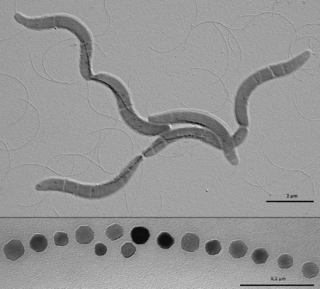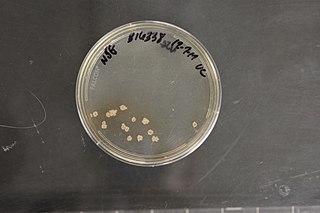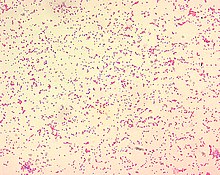
The Rhodospirillales are an order of Pseudomonadota.
The Thermoprotei is a class of the Thermoproteota.
The Phyllobacteriaceae are a family of bacteria. The most common genus is Mesorhizobium which contains some of the rhizobia species.

Desulfovibrionales are a taxonomic order of bacteria belonging to the phylum Thermodesulfobacteriota, with four families. They are Gram-negative. The majority are sulfate-reducing, with the exception of Lawsonia and Bilophila. All members of this order are obligately anaerobic. Most species are mesophilic, but some are moderate thermophiles.
The Syntrophobacterales are an order of Thermodesulfobacteriota. All genera are strictly anaerobic. Many of the family Syntrophobacteraceae are sulfate-reducing. Some species are motile by using one polar flagellum.
The Coriobacteriales are an order of Actinomycetota.

Alphaproteobacteria is a class of bacteria in the phylum Pseudomonadota. The Magnetococcales and Mariprofundales are considered basal or sister to the Alphaproteobacteria. The Alphaproteobacteria are highly diverse and possess few commonalities, but nevertheless share a common ancestor. Like all Proteobacteria, its members are gram-negative and some of its intracellular parasitic members lack peptidoglycan and are consequently gram variable.
In the taxonomy of microorganisms, the Methanomicrobiales are an order of the Methanomicrobia. Methanomicrobiales are strictly carbon dioxide reducing methanogens, using hydrogen or formate as the reducing agent. As seen from the phylogenetic tree based on 'The All-Species Living Tree' Project the family Methanomicrobiaceae is highly polyphyletic within the Methanomicrobiales.

Bacteroidales is an order of bacteria. Notably it includes the genera Prevotella and Bacteroides, which are commonly found in the human gut microbiota.

The order Flavobacteriales comprises several families of environmental bacteria.
Sphingobacteriaceae is a family of environmental bacteria.

In taxonomy, Acidianus is a genus of the Sulfolobaceae.
The Sphingomonadales are an order of the Alphaproteobacteria.
The Jiangellaceae are the only family of the order Jiangellales, which is a part of the phylum Actinomycetota.

The Glycomycetaceae are a family of bacteria.
The Kineosporiaceae is a family of Gram positive bacteria.
Xanthobacter is a genus of Gram-negative bacteria from the family Xanthobacteraceae.
Stappiaceae is a family of Alphaproteobacteria.
The Streptosporangiales are an order of bacteria.
The Propionibacteriales are an order of bacteria.







